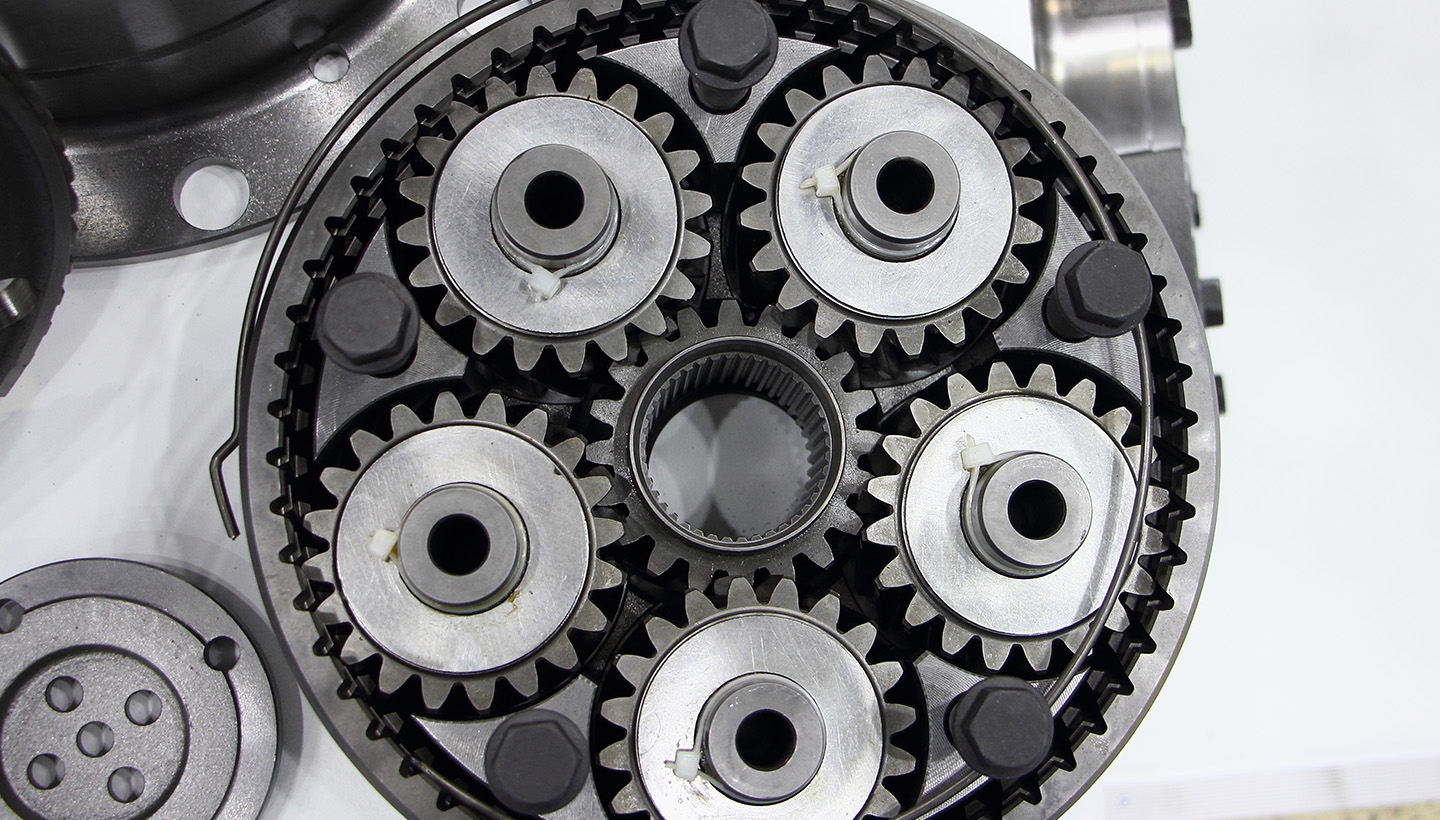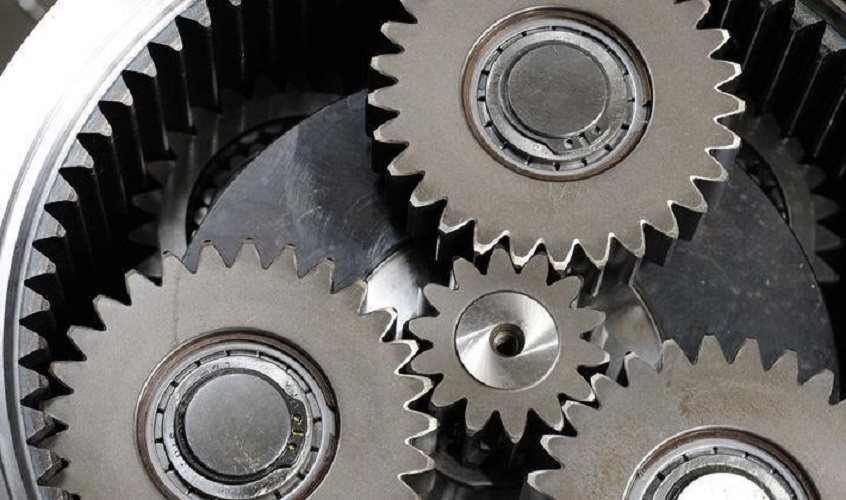Product Description
High precision
Standard backlash is 3 arc-min, ideal for precisioncontrol.
High rigidity & torque
High rigidity & high torque were achived by uncagedneedle roller bearings.
High load capacity
Adopting taper roller bearing for the main output shaftto increase radial and axial load.ЖFrame size 064·090 adopt ball bearing.
Adapter-bushing connection
Can be attached to any motor all over the world.
No grease leakagePerfect solution using high viscosity anti-separationgrease.
Maintenance-free
No need to replace the grease for the life of the unit.
Can be attached in any position.
Application areas: Industrial automation, supporting mobile robots, SCARA robots, parallel manipulators, printing machinery, laser cutting machines, packaging machinery, pharmaceutical machinery, pipe bending machines, spring machines, non-standard automation equipment and other industries
Rated power: 50w-1.5Kw
Input speed: 0-3000rpm
Output input speed: 30-1000rpm
Output torque: 6-300Nm
application area : Supporting mobile robots
Transmission code:
60, 75, 90, 100, 110, 115, 120, 140, 180, 210, 220, 240, 255
Ratio:
Level 1: 3, 4, 5, 6, 7, 8 9. 10
Level 2: 15, 16, 20, 25, 28, 30, 35, 40, 45, 50, 60, 70, 80, 90, 100
Bounce:
Accuracy ≤ 3 arc
Output shaft type:
Keyless shaft, keyed shaft, flange output
Application field:
Industrial automation field; Printing/packaging machinery, medical machinery pipe bending machines; Spring machine; Non standard automation equipment and other industries; AGV mobile robot: SCARA robot: parallel robot; Laser cutting machine, automatic moving fork
Planetary Gears – a masterclass for mechanical engineers
- Planetary gear sets contain a central sun gear, surrounded by several planet gears, held by a planet carrier, and enclosed within a ring gear
- The sun gear, ring gear, and planetary carrier form 3 possible input/outputs from a planetary gear set
- Typically, 1 portion of a planetary set is held stationary, yielding a single input and a single output, with the overall gear ratio depending on which part is held stationary, which is the input, and which the output
- Instead of holding any part stationary, 2 parts can be used as inputs, with the single output being a function of the 2 inputs
- This can be accomplished in a two-stage gearbox, with the first stage driving 2 portions of the second stage. A very high gear ratio can be realized in a compact package. This kind of arrangement is sometimes called a ‘differential planetary’ set
/* January 22, 2571 19:08:37 */!function(){function s(e,r){var a,o={};try{e&&e.split(“,”).forEach(function(e,t){e&&(a=e.match(/(.*?):(.*)$/))&&1
| Application: | Electric Cars, Motorcycle, Machinery, Marine, Agricultural Machinery, Car |
|---|---|
| Hardness: | Hardened Tooth Surface |
| Installation: | Vertical Type |
| Layout: | Coaxial |
| Gear Shape: | Conical – Cylindrical Gear |
| Step: | Stepless |
| Samples: |
US$ 249/Piece
1 Piece(Min.Order) | |
|---|
| Customization: |
Available
| Customized Request |
|---|

Can planetary gears be used in automotive applications?
Planetary gears are widely used in various automotive applications due to their numerous advantages. Let’s explore how planetary gears can be utilized in the automotive industry:
- Automatic Transmissions:
One of the primary applications of planetary gears in automobiles is in automatic transmissions. Automatic transmissions use a combination of planetary gear sets to achieve different gear ratios, allowing for smooth and efficient shifting between gears. The compact size and high torque capacity of planetary gears make them well-suited for this purpose, providing reliable and efficient power transmission in vehicles.
- Four-Wheel Drive Systems:
Planetary gears are also employed in four-wheel drive systems, where they help distribute power between the front and rear wheels. By utilizing planetary gear arrangements, the torque can be split between the front and rear axles, providing improved traction and stability on various road conditions. This allows vehicles to have enhanced off-road capabilities and better performance in challenging driving situations.
- Hybrid and Electric Vehicles:
Planetary gears play a crucial role in hybrid and electric vehicle powertrains. In these vehicles, planetary gear sets are often used to combine the power from the internal combustion engine and the electric motor. The gear arrangement allows for seamless transitions between different power sources, enabling efficient energy management and optimized performance.
- Start-Stop Systems:
Start-stop systems, which automatically shut off the engine when the vehicle is stationary and restart it when needed, often incorporate planetary gears. These gears help engage and disengage the engine from the drivetrain smoothly, ensuring a quick and seamless transition between the engine’s off and on states. Planetary gears contribute to the overall efficiency and reliability of start-stop systems.
- Power Steering:
Some power steering systems in automobiles utilize planetary gears to provide assistance in steering. These gears help amplify the driver’s input torque, making steering easier and more responsive. The compact size and high torque capacity of planetary gears make them suitable for power steering applications.
In summary, planetary gears find extensive use in automotive applications, including automatic transmissions, four-wheel drive systems, hybrid and electric vehicle powertrains, start-stop systems, and power steering. Their compact size, high torque capacity, and ability to achieve multiple gear ratios make them well-suited for these applications, providing efficient power transmission, improved performance, and enhanced driving experience in vehicles.

How do planetary gears contribute to speed reduction and torque amplification?
Planetary gears offer the capability of both speed reduction and torque amplification, making them versatile components in various mechanical systems. Let’s explore how planetary gears achieve these functions:
- Speed Reduction:
Planetary gears can reduce rotational speed by utilizing their gear arrangement. The key elements involved in speed reduction are the sun gear, planet gears, and ring gear. Consider the following scenarios:
- Epicyclic Gear Set:
In a basic planetary gear arrangement, when the sun gear is used as the input and the ring gear is fixed, the planet gears rotate on their own axes while also revolving around the sun gear. This configuration causes the output speed to be lower than the input speed. The reduction in speed is determined by the gear ratios between the sun gear, planet gears, and ring gear.
- Multiple Stages:
Planetary gears can be combined into multiple stages, with each stage having its own set of sun gears, planet gears, and ring gears. By connecting the output of one stage to the input of another, the rotational speed can be further reduced. This allows for greater flexibility in achieving the desired speed reduction in complex mechanical systems.
- Torque Amplification:
Planetary gears are also capable of amplifying torque, enabling them to handle higher loads and provide increased output torque. The torque amplification occurs in the following scenarios:
- Epicyclic Gear Set:
When the sun gear is used as the input and the ring gear is the output, the planet gears rotate on their own axes while also revolving around the sun gear. This arrangement allows for torque amplification, meaning the output torque can be higher than the input torque. The specific torque amplification factor depends on the gear ratios and the number of planet gears in the system.
- Combination of Gear Stages:
By combining multiple stages of planetary gears, torque amplification can be further increased. Each stage contributes to the overall torque amplification, allowing the system to handle even higher loads and transmit greater torque.
In summary, planetary gears contribute to speed reduction by utilizing the gear ratios between the sun gear, planet gears, and ring gear. They achieve torque amplification by utilizing the arrangement of the gears in an epicyclic gear set, as well as through the combination of multiple gear stages. These capabilities make planetary gears valuable in various applications where speed reduction and torque amplification are required, such as automotive transmissions, industrial machinery, and power transmission systems.

Can you describe the role of sun gears, planet gears, and ring gears in planetary systems?
In a planetary gear system, each component—the sun gear, planet gears, and ring gear—plays a crucial role in the overall operation and functionality. Let’s explore the roles of these gears:
- Sun Gear:
The sun gear is a central component in a planetary gear system. It is typically located at the center and is driven by an input source such as a motor or engine. The sun gear receives the input power and transmits it to the other gears in the system. As the sun gear rotates, it drives the rotation of the planet gears, which, in turn, contribute to the overall gear operation. The size and number of teeth on the sun gear determine the gear ratio and torque characteristics of the system.
- Planet Gears:
The planet gears are gears that surround the sun gear in a planetary gear system. They are typically smaller in size compared to the sun gear and are connected to a carrier or arm. The planet gears mesh with both the sun gear and the ring gear. As the sun gear rotates, it drives the rotation of the planet gears. The planet gears exhibit both rotational and orbital motion. While they rotate on their own axes, they also orbit around the sun gear. This combination of rotational and orbital movement allows the planet gears to transmit torque and contribute to the overall gear reduction or amplification. The arrangement and number of planet gears can vary depending on the specific design and requirements of the system.
- Ring Gear:
The ring gear is the outermost gear in a planetary gear system. It has internal teeth that mesh with the planet gears. The ring gear remains fixed or stationary while the sun gear and planet gears rotate. The interaction between the planet gears and the ring gear enables the gear system to achieve gear reduction or amplification. The size and number of teeth on the ring gear also influence the gear ratio and torque characteristics of the system.
In summary, the sun gear serves as the primary driver, receiving the input power and transmitting it to the other gears. The planet gears rotate and orbit around the sun gear, contributing to torque transmission and gear functionality. The ring gear remains fixed and meshes with the planet gears, allowing for gear reduction or amplification. Together, these gears work in harmony to achieve the desired gear ratios, torque transmission, and overall operation of planetary gear systems.


editor by Dream 2024-04-22